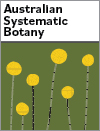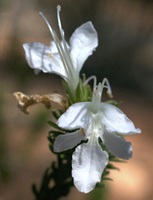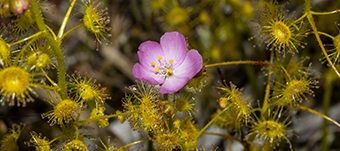Australian Systematic Botany
Volume 38
Number 4 2025
The flowering plant order Santalales contains more than 2000 species of parasitic plants, ranging from trees and shrubs to highly specialised mistletoes and even plants that grow underground and never photosynthesise. We used hundreds of nuclear genes to reconstruct evolutionary relationships in the order, with a focus on Australian plants such as Leptomeria and Choretrum. Our results improve the basis for understanding how parasitism evolved in the order and have implications for how Santalales is classified. (Image credit: Benjamin Anderson.)
This article belongs to the collection: Genomics for Australian plants.
Why the cosmopolitan mint family member Teucrium is so morphologically diverse throughout Australasia is unknown. Relationship and divergence times were estimated using genomic data, identifying two independently timed incursions made by vastly unrelated lineages, the oldest of which in Australia appears to have reduced specificity on pollinators in place of increasing specificity on animal dispersers. Results provide a broader understanding about the evolution of plant reproduction and assist with the evaluation and hence conservation of biological diversity. (Photograph by: T. C. Wilson.)
This article belongs to the collection: Genomics for Australian plants.
Drosera is a diverse group of carnivorous plants that are speciose in Australia and has undergone significant taxonomic revisions. Data presented here were generated as part of the Genomics for Australian Plants initiative. We are the first to use a phylogenomic approach for Drosera and include taxa from all major clades occurring in Australia. Our analyses support the two major groups of Australian Drosera as subgenera but raise uncertainty about the confidence in the species depauperate sister groups. (Photograph by Timothy A. Hammer.)
This article belongs to the collection: Genomics for Australian plants.








